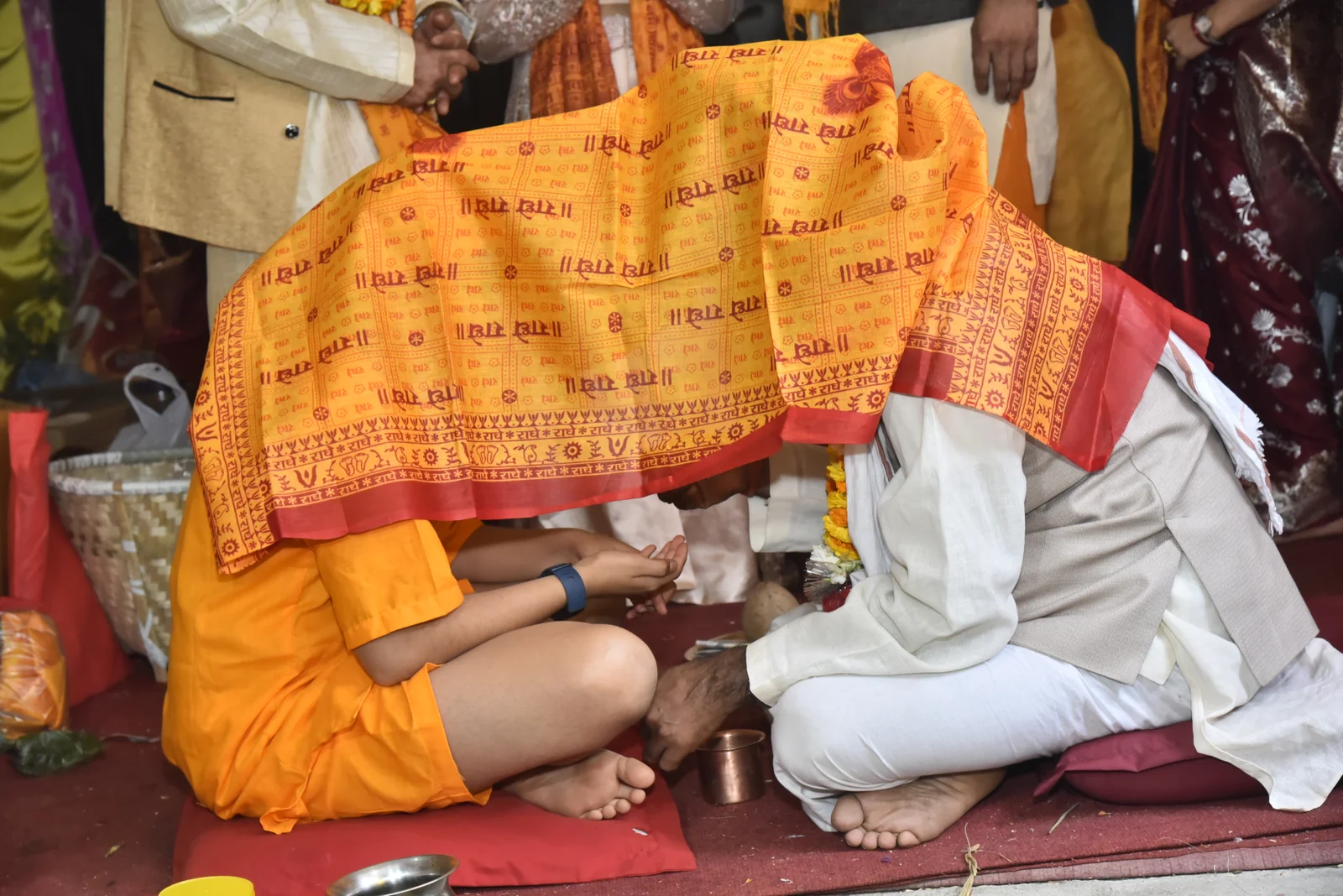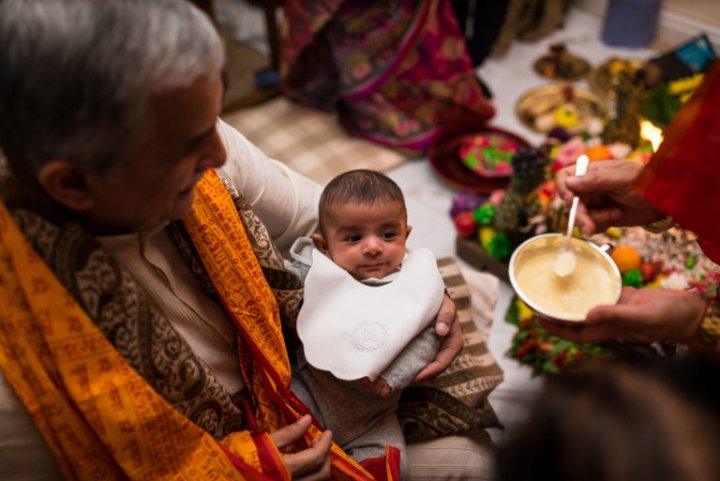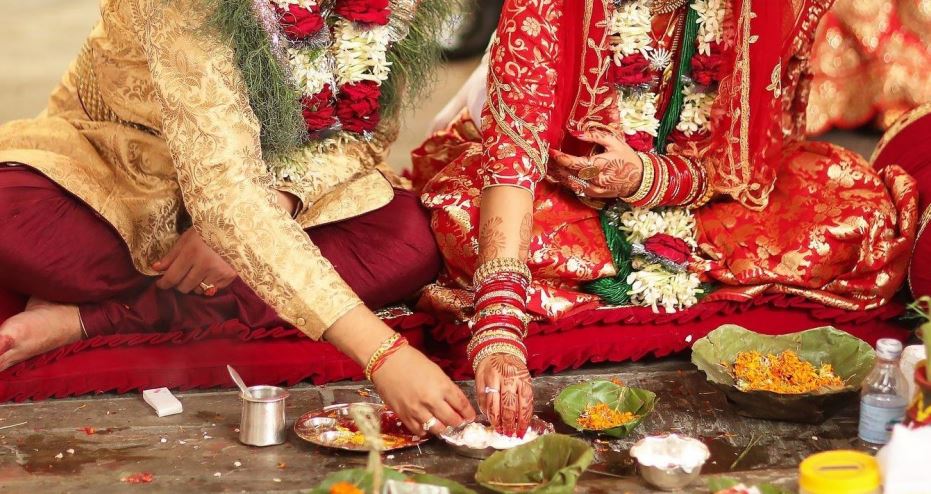Share this Article
Nwaran is the traditional naming ceremony for newborns in Nepalese Hindu culture. It is an important ritual performed to officially give a name to the baby, based on astrological calculations. The ceremony is believed to bless the child with good fortune, protection, and a prosperous life. This article explores the timing, significance, rituals, and modern adaptations of the Nwaran ceremony.
When is Nwaran Performed?
The timing of the Nwaran ceremony is determined by the baby’s gender and is rooted in Hindu traditions and astrological practices. For boys, the ceremony is performed on the 9th day after birth, while for girls, it is held on the 8th day after birth. These specific days are chosen because they are considered auspicious and align with the baby’s astrological chart. However, if it is not possible to perform the ceremony on these exact days due to logistical or health reasons, it can be conducted later with the guidance of a priest (purohit). The priest will consult the baby’s birth chart to determine the next suitable date for the ceremony, ensuring that it aligns with the baby’s zodiac sign and planetary positions.
Importance of Nwaran
The Nwaran ceremony holds immense significance in Nepalese Hindu culture, as it marks the first major ritual in a baby’s life. The name given during this ceremony is not just a label but is believed to influence the child’s destiny, health, and happiness. The name is chosen based on Vedic astrology, which takes into account the baby’s birth time, date, and planetary positions. The first letter of the name is determined by the baby’s zodiac sign (Rashi), ensuring that the name aligns with the child’s astrological chart and brings positive energy into their life.
The ceremony is also a way to introduce the baby to the spiritual world and seek blessings from the gods and ancestors. It is believed that the name given during Nwaran will protect the child from negative influences and guide them toward a prosperous and fulfilling life. Additionally, the ceremony strengthens family bonds, as relatives and friends come together to celebrate the baby’s arrival and offer their blessings.
The Nwaran Ceremony Process
A. Purification and Preparation
Before the ceremony begins, the baby is bathed and dressed in new clothes, symbolizing purity and a fresh start. A sacred space is created in the home or temple, where the ceremony will take place. This space is decorated with flowers, holy water, and offerings such as fruits, sweets, and incense. The atmosphere is filled with spiritual energy, as the family prepares to welcome the baby into the world with blessings and good wishes.
B. Birth Chart (Cheena) Calculation
A priest (purohit) plays a central role in the Nwaran ceremony. He prepares the baby’s astrological chart (Cheena), which is based on the baby’s birth time, date, and planetary positions. The chart determines the baby’s zodiac sign (Rashi) and the first letter for their name. The priest uses this information to suggest a suitable name that aligns with the baby’s astrological chart and brings good fortune. The birth chart is also used to predict the baby’s future and guide the family in raising the child.
C. Naming the Baby
Once the priest suggests a name, the father, grandfather, or an elder relative whispers the name three times into the baby’s ear. This act symbolizes the official naming of the child and introduces them to their identity. The name is chosen carefully, as it is believed to influence the child’s personality, health, and destiny. The repetition of the name three times is a way to seal it in the baby’s consciousness and ensure that it brings positive energy into their life.
D. Blessings and Tika Ceremony
After the baby is named, family members gather to offer their blessings. They apply tika (red vermillion) on the baby’s forehead, which is a symbol of protection and good fortune. The tika is often accompanied by rice grains and yogurt, which are believed to bring prosperity and health. Elders also give gifts and money to the baby, symbolizing their wishes for a bright future. The blessings of the elders are considered especially important, as they are believed to carry the wisdom and experience of previous generations.
E. Celebration with Relatives and Feasting
The Nwaran ceremony is a joyous occasion, and it is often followed by a traditional feast. Relatives and friends gather to celebrate the baby’s official naming and offer their congratulations to the parents. The feast typically includes Nepali delicacies such as dal-bhat-tarkari (lentils, rice, and vegetables), sel roti (a sweet, ring-shaped bread), and meat dishes. The celebration is a time for the family to come together, share their joy, and strengthen their bonds. It is also an opportunity to introduce the baby to the community and seek their blessings for a happy and prosperous life.
Modern Adaptations of Nwaran
While the core rituals of Nwaran remain unchanged, modern families have adapted the ceremony to suit their lifestyles and preferences. In urban areas, parents sometimes choose a name for the baby before birth, based on personal preferences or family traditions. However, they still perform the Nwaran ceremony to seek blessings and ensure that the name aligns with the baby’s astrological chart. Some families combine Nwaran with Pasni, the first rice-feeding ceremony, to save time and resources. This combined ceremony is often held when the baby is around 6 months old.
In addition, many families now conduct the Nwaran ceremony in temples or banquet halls, rather than at home. This shift reflects the modern lifestyle, where families may not have the space or time to host large gatherings at home. Temples and banquet halls provide a convenient and organized setting for the ceremony, allowing families to focus on the spiritual and social aspects of the event. Despite these changes, the essence of the Nwaran ceremony remains the same, as families continue to seek blessings and good fortune for their newborns.
Conclusion
The Nwaran ceremony is a beautiful and meaningful tradition that marks the beginning of a baby’s spiritual journey in Nepalese Hindu culture. It is a time for the family to come together, seek blessings, and celebrate the arrival of a new member. The name given during the ceremony is believed to influence the child’s destiny, health, and happiness, making it a deeply significant event. While modern adaptations have made the ceremony more convenient, the core rituals and spiritual significance remain unchanged. Nwaran continues to be a cherished tradition that strengthens family bonds, preserves cultural heritage, and ensures a bright future for the newborn.
Categories:
Culture & Traditions
Tags:
NwaranCeremony
,
NamingCeremonyNepal
,
NepaliTraditions







